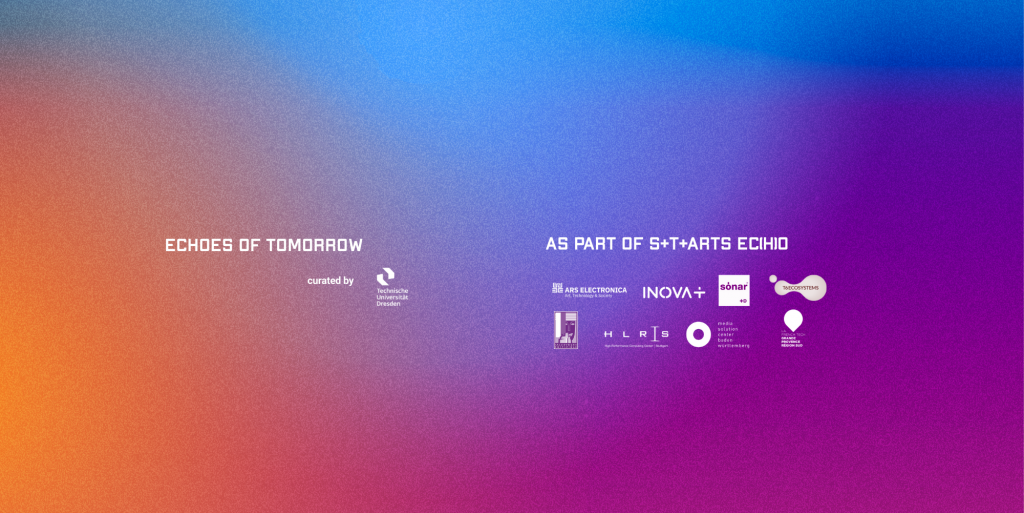This project explores the connection between Marghera port, the global flow of capital, and Venice with its residents and more than human inhabitants. Multiple attempts at regenerating and converting the area through pointed investments have continuously stalled, making it an important symbolic microcosm of various, unresolved, intertwined instances of capitalist collapse, an area of capitalist ‘symptomatology’.
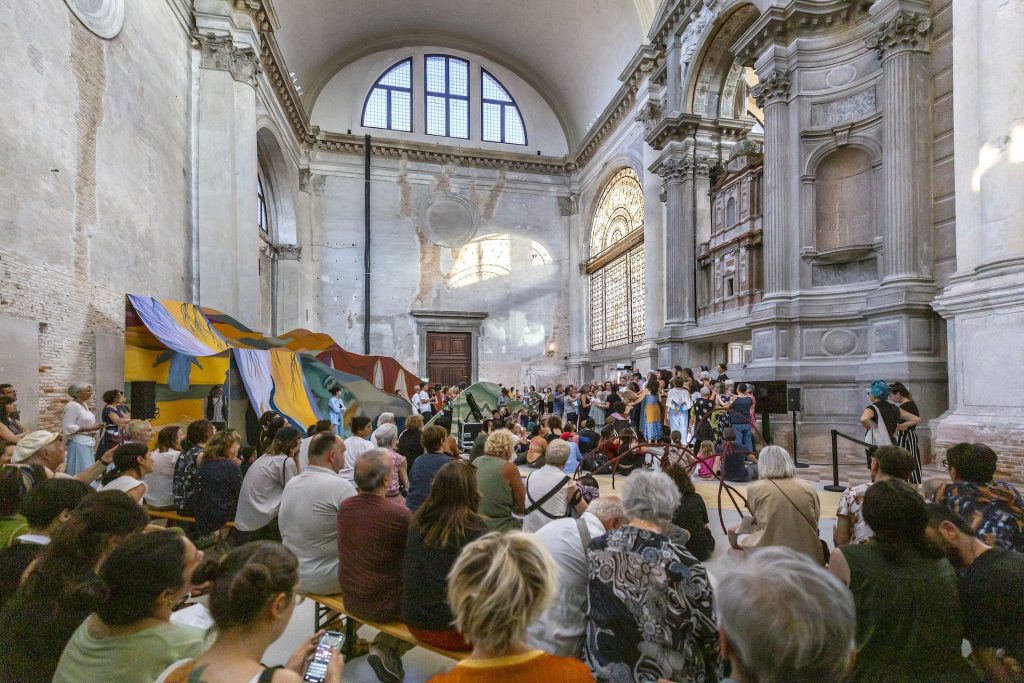
The worker-led theater piece is centered on the history of Porto Marghera, an industrial zone situated directly across from Venice. It also reimagines the Venice lagoon as a breathing organism. Water—and the network of waterways—plays an integral role in the work: as a carrier, as life and living. Whilst Porto Marghera was the setting for one of Italy’s first landmark trials in which a petrochemical plant was charged with environmental disaster and involuntary manslaughter for the deaths of over 150 workers from cancer. The question then remains: how do we account for what we have long called capitalist ‘development’, and the planetary devastation it has left in its wake?
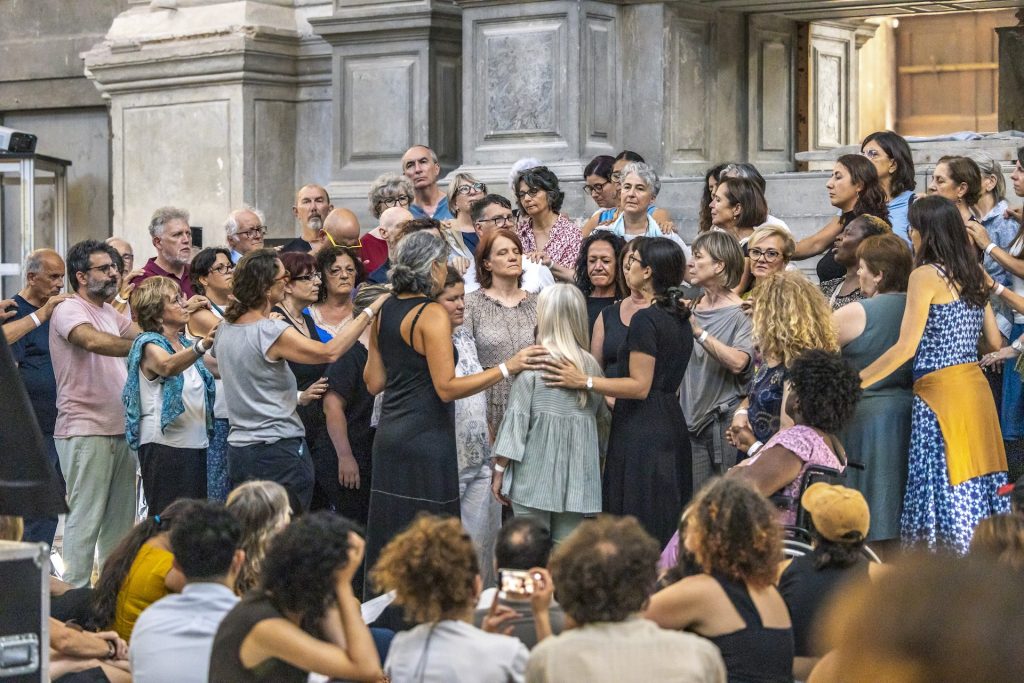
Artist: Adelita Husni-Bey (Italian-Libyan)
In collaboration with: Coro Operaio delle Voci dal Mondo (Voices of the World Workers’ Choir) – Venezia Fonte, Treviso, Spilimbergo.
Musical direction: Giuseppina Casarin
With the participation of: Ngalaha Noel, Giuseppe Tosatto, Giuseppe Palmieri, Pandora Climate Lab.
Performed by: Lisa Boni, Giulio Canestrelli, Roberta Da Soller, Angelica Leo, Chiara Tarabotti, Vince Tosetto, Damiano Venuto.
Residency Support Network
Image credit: Adelita Husni-Bey, Il Fiato di Suolo, performance and forum theatre, at the TBA21 Solstice Festival, June 2025, Ocean Space, Venice. Organized by TBA21–Academy within the framework of S+T+ARTS4WaterII, an initiative by the European Commission. Photo: Enrico Fiorese
Commissioned by TBA21–Academy as part of the STARTS4Water II residency program c o-funded by the European Commission.
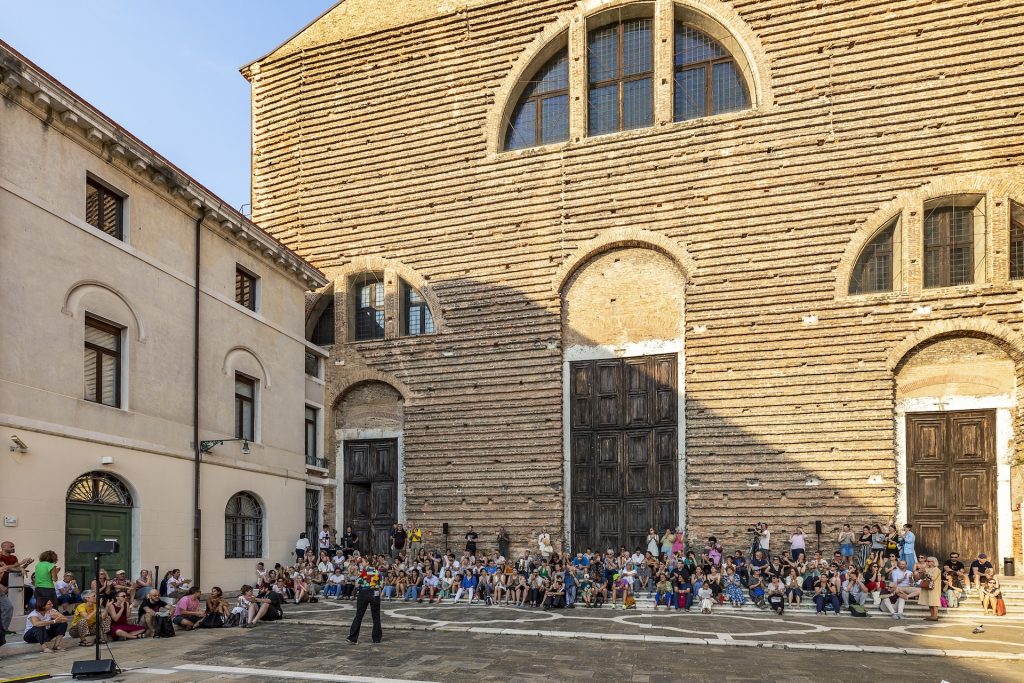
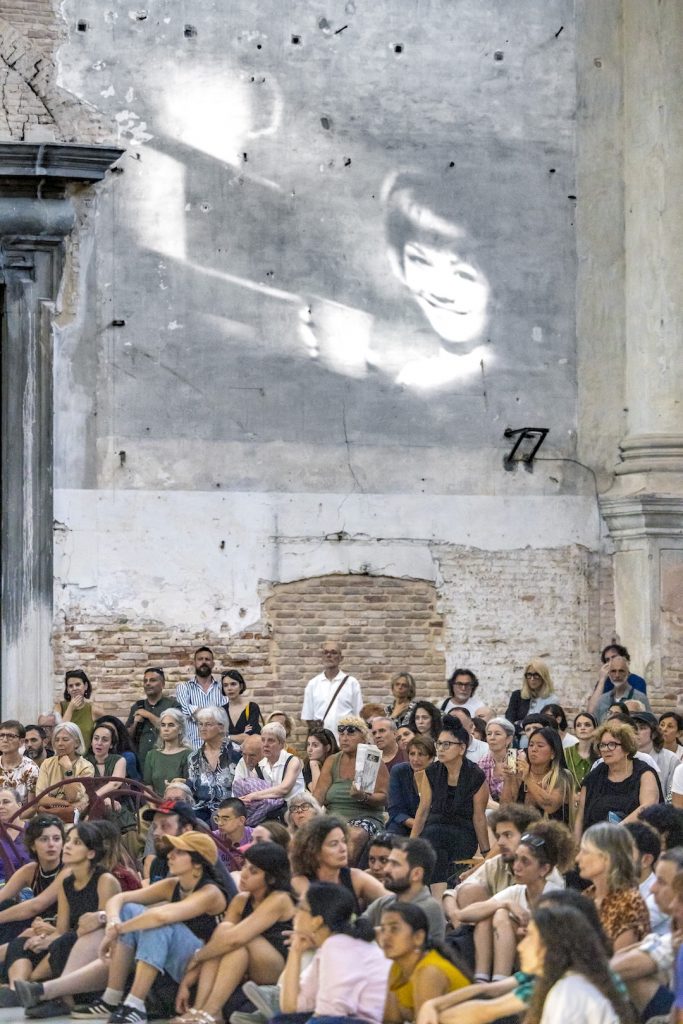
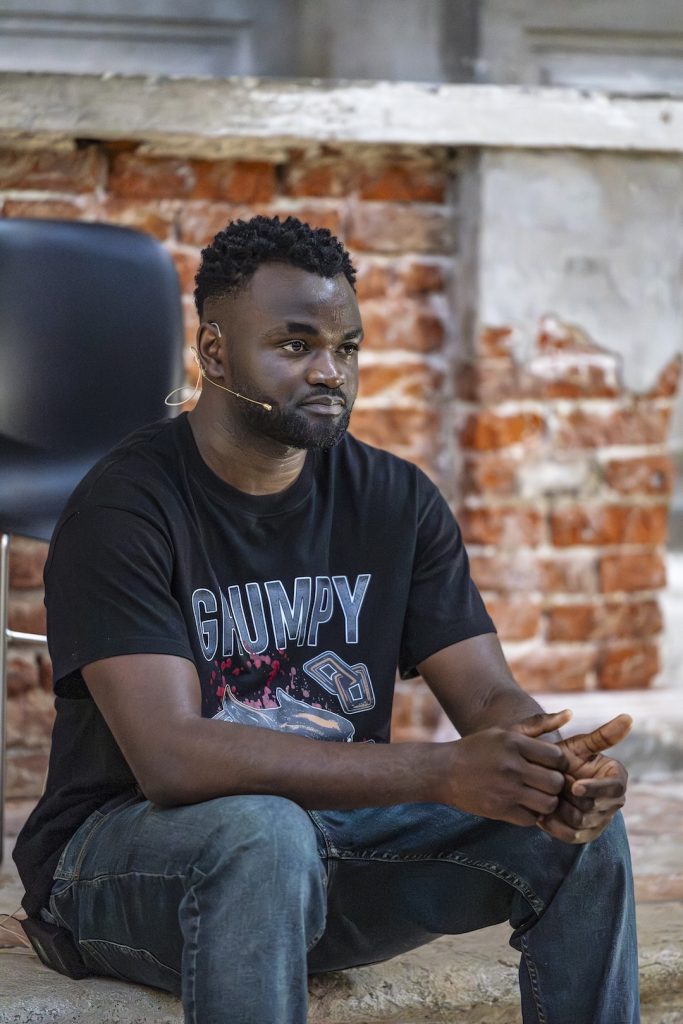
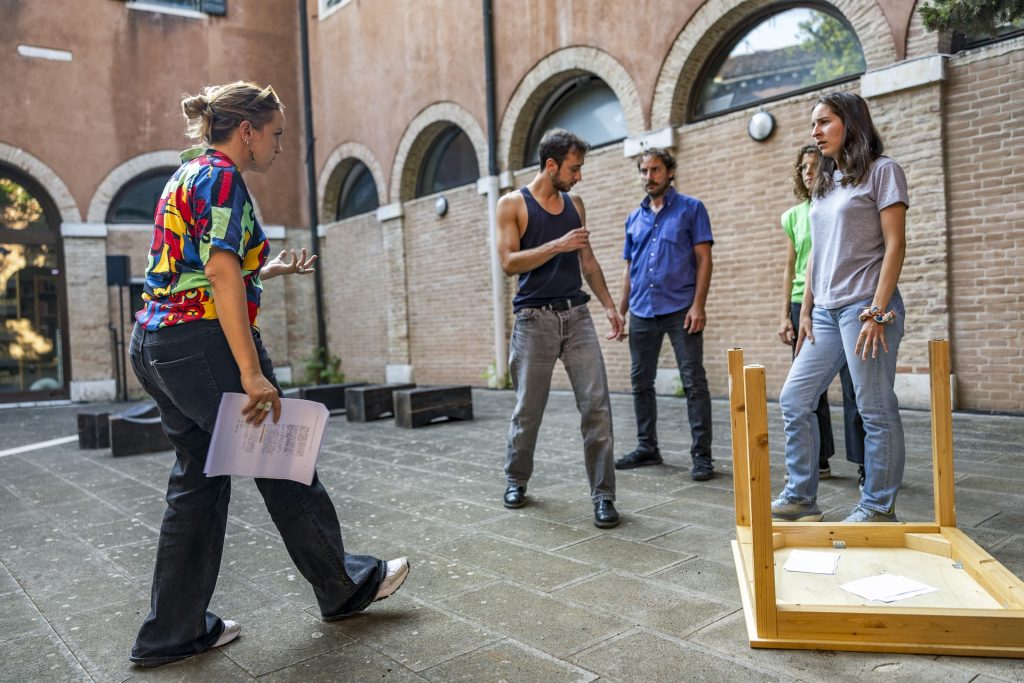
About Adelita Husni-Bey
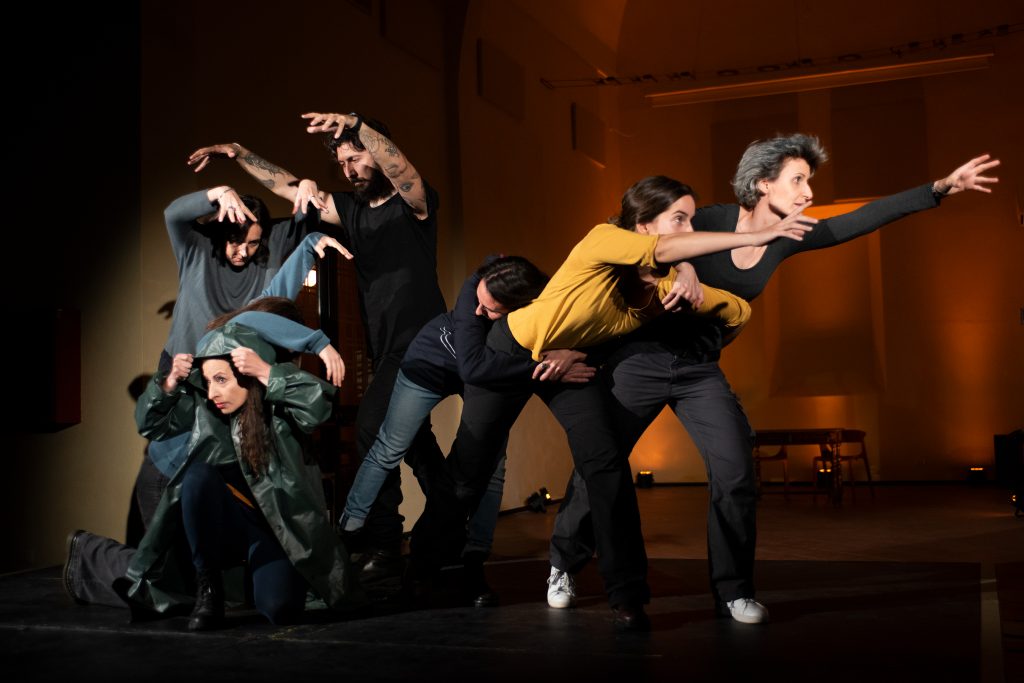
Adelita Husni-Bey is an artist and pedagogue invested in anarcho-collectivism, theater, and legal anthropology. She organizes workshops, publications, broadcasts, and exhibition work using non-competitive pedagogical models through the framework of contemporary art. Involving activists, architects, jurists, schoolchildren, spoken-word poets, actors, urbanists, physical therapists, students, and teachers, her work consists of making sites in which to practice collectively. Her work was part of the Italian pavilion at the 57th Venice Biennale, Venice, 2017. She has participated in Care Ecologies, State of Concept, Athens, 2024, Quizá Mañana, XVI edition of the Cuenca Biennial, 2023, New Photography, Museum of Modern Art, New York, 2018; The Eighth Climate, 11th Gwangju Biennale, 2015; Really Useful Knowledge, Reina Sofia Museum, Madrid, 2014. She was a 2020-2022 Vera List Center Fellow with a project centered on the radical changes in social relations brought about by responses to past and current pandemics.
Host / Region
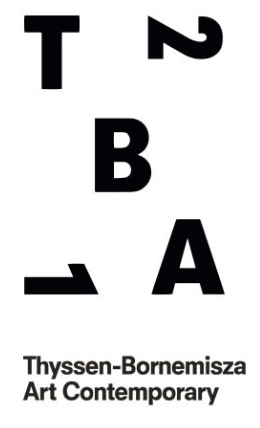
TBA21–Academy/ Madrid, Spain/ Venice, Italy – Venice Lagoon
Abstract
This project invited speculative practices to reimagine the future of the Venice Lagoon’s port areas, exploring how technodiversity can empower our future critical investigations, narrativizations, and re-imaginations.
Keywords
liminal spaces, radical futurism, more-than-human underwater ecosystems investigative aesthetics,port infrastructures, eco-social crisis
Description of the regional challenge
The Venice Lagoon faces significant challenges related to its liminal spaces, particularly port areas and their infrastructure, such as environmental degradation that affects water quality and marine habitats. Technodiversity encourages the development of alternative technologies that respect cultural and biological diversity. How can speculative practices reimagine the future of these spaces?
Venice embodies an interdependency of nature and humans shaped by political decisions and technological advancement that turned the Venice Lagoon into a cyborg. Ports represent the liminal spaces of global shipping and trade and act as the gatekeepers of planetary logistics. As digital technologies have expanded human imagination and at the same time accelerated their own homogenization, how can technodiversity be used as a strategy against technological colonialism, as a tool for critical investigation, narrativization, and re-imagination of the hidden layers of complex systems?
How is the mission S+T+ARTS driven?
We invite creative practitioners to search for the ghosts and hidden layers within maritime infrastructures and their relation to the more-than-human ecosystems. Community engagement and interdisciplinary collaboration are integral to the proposed project: we encourage applicants to consider how their projects might interact with communities, policymakers, and other stakeholders to envision the long-term impact of their work on the sustainable futures of the lagoon.
The result of the residency will be shown during Ocean Space June 2025.
About The Project – Venice Lagoon. Investigating Liminal Spaces through Technodiversity
This project explores the connection between Marghera port, the global flow of capital and Venice with its residents and more than human inhabitants. Multiple attempts at regenerating and converting the area through pointed investments have continuously stalled, making it an important symbolic microcosm of various, unresolved, intertwined instances of capitalist collapse, an area of capitalist ‘sympomatology’. This project uses Boal’s Legislative Theatre as a form of participatory theater to give rise to ‘legislation from below’ and a video installation engaging the process and themes of the work.
Jury Statement
“Adelita offers an informed and complex assessment of the socio-ecological challenges of Venice, the Lagoon and Marghera. The artist does not work with any technology for the sake of using some. Alternatively, she brings criticality to technosolutionism and techno fetishism, and brings an innovative perspective on what all technology can mean. Her critical, integrative, human-environment, geographic “suturing” approach is fascinating and very timely. Bey’s aim to approach governance not through the political/legal system, but through dance/theater approach is certainly creative and has good potential for impact. Framing the lagoon as a productive juridical zone is pioneer and its objective of producing a ‘legislative proposal from below‘ holds a strong potential for impacts across the local communities, producing a ripple effect. Getting a broad and diverse community involved will be critical to its success. She plans to work with workers and students to think of the future of Marghera, and argues that she already has close contacts with the territory that would make the project feasible.“

